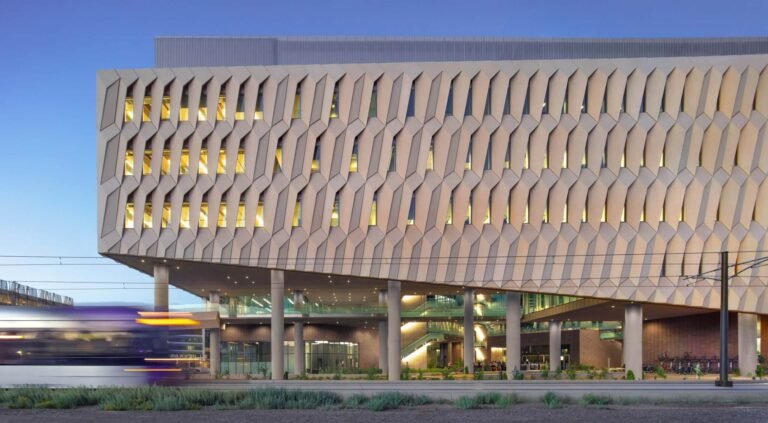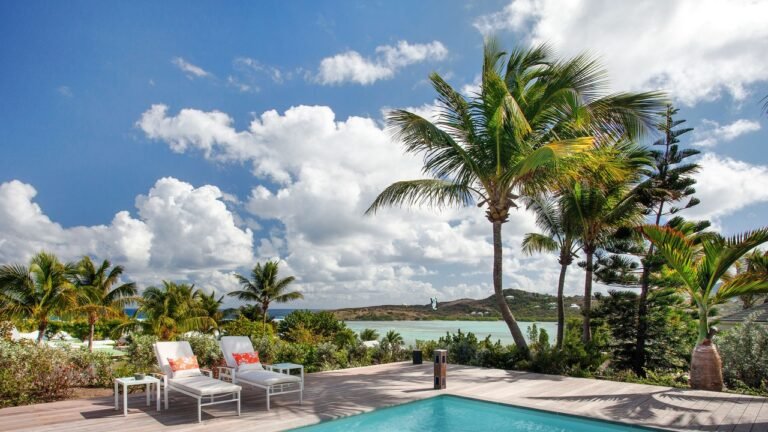bjarke ingels + barcode architects complete landmark ‘sluishuis’ housing in amsterdam
a Modern building block on the water
Bjarke Ingels Group (BIG) and Barcode Architects completes an iconic new landmark for Amsterdam with the Sluishuis housing project. The project stands at the confluence between the water, the rural landscape, and the city, and stands within the growing residential neighborhood of IJburg. Developed and built by VORM, BESIX Real Estate Development and BESIX Nederland, Sluishuis is a contemporary translation of the typical Amsterdam building block that responds specifically to its special location in the water.
The volume is elevated on one side to allow the water into the courtyard and stepped down on the other side to make an inviting gesture towards IJburg with friendly green terraces. From every angle, visitors experience the volume differently.
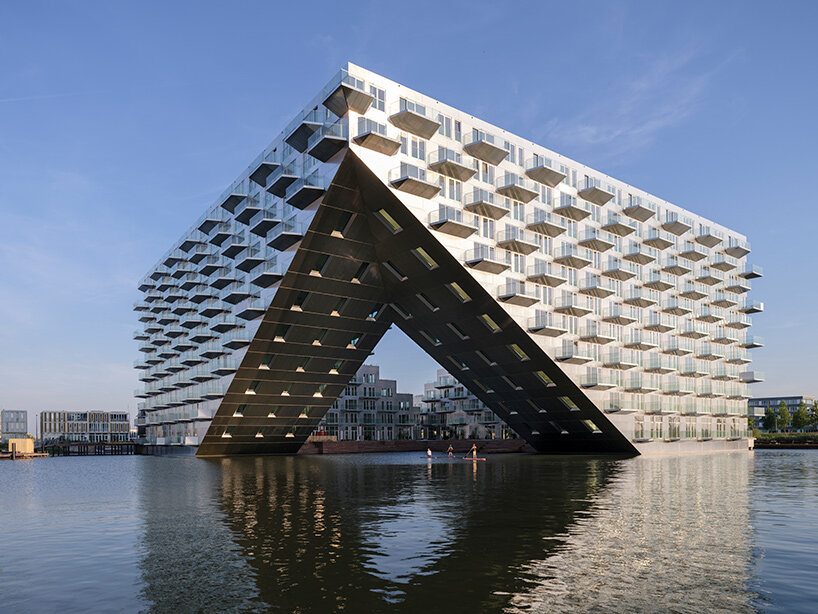 images © Ossip van Duivenbode | @ossipvanduivenbode
images © Ossip van Duivenbode | @ossipvanduivenbode
sluishuis: homes with rich diversity
With the newly unveiled Sluishuis housing complex, Bjarke Ingels Group (see here) and Barcode Architects (see here) introduce 442 apartments to Amsterdam. Rental and owner-occupied homes alternate throughout the building and provide space for various target groups, income levels and age categories. All apartments are accessible by way of a central courtyard. There, the cantilever and the water are a welcoming threshold to the building. Each home has optimal views and daylight thanks to the special shape of Sluishuis with its double-cut volume.
Sluishuis has a rich diversity of housing typologies, including compact urban studios and water sports apartments. On the top two floors are duplex penthouses with both a relationship with the courtyard and a view over the IJmeer. Premium flats with luxurious and sunny wooden roof terraces with views over IJburg are located on the stepped part.
The apartments at the bottom of the cantilever offer sweeping views over the IJ and directly on the water. These unique units hang over the water, opening up with large windows which cut through the sloping façade. From here, occupants can view the boats sailing directly below.
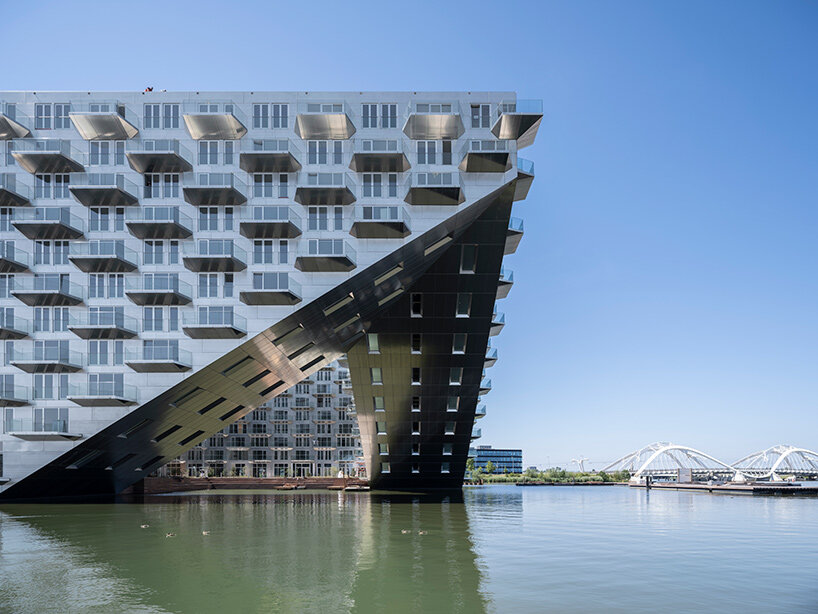
the Public plinth and jetty promenade
The plinth will accommodate a varied program including a sailing school, water sports center and restaurant
with a spacious terrace in the sun. Residents and visitors enter through the courtyard. The walkway to the roof of Sluishuis offers visitors and residents a spectacular view of the water and the neighborhood. A jetty promenade with thirty-four houseboats surround the building. The jetty landscape stimulates contact with the water with various mooring places, sitting decks, and floating gardens.
The carefully designed landscape also stimulates flora and fauna with local plant species and a bird island. In this way, the plinth and the surrounding landscape form a high-quality addition to the environment.
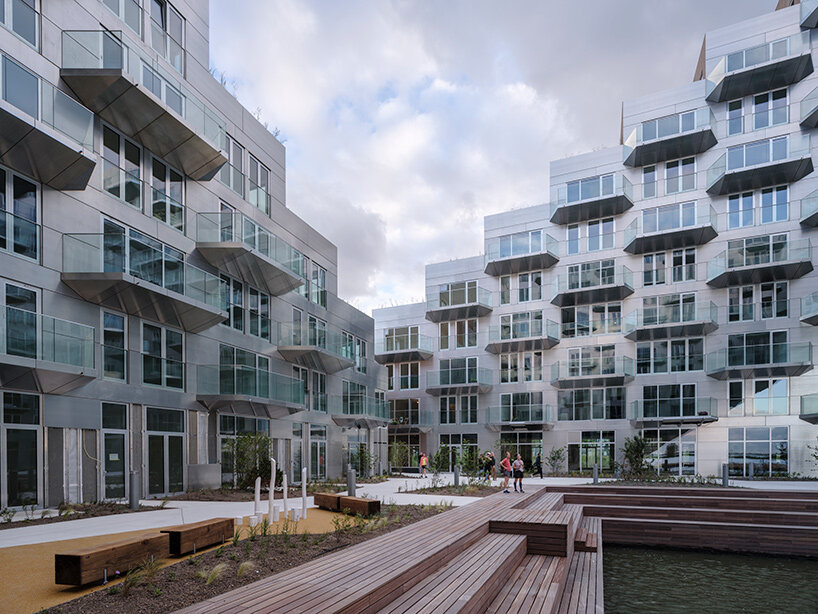
strengthening social cohesion
With the Sluishuis housing complex, Bjarke Ingels Group and Barcode architects aims to stimulate and strengthen the connection between residents and visitors. The staggered balconies create surprising sight lines and exchanges. The public route across the roof, as well as the children’s playground in the courtyard, the jetty promenade, and the positioning of the wooden roof terraces stimulate spontaneous encounters.
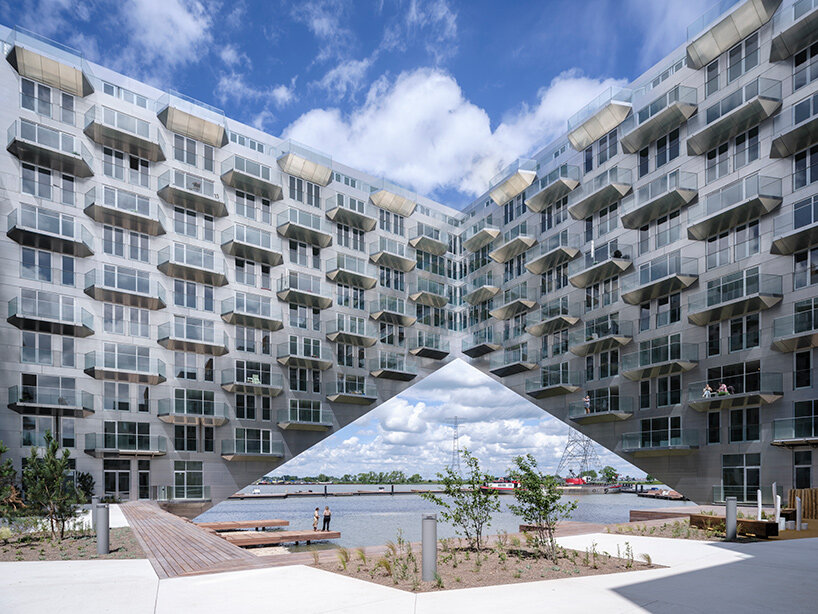
a natural materiality
Through its material palette, the building seeks contrast but also a connection with its surroundings. In the material palette, natural materials have been chosen so that the building will have a rich and natural appearance over the years. The abstract, untreated aluminum of the façade reflects the water and gives the volume a different appearance at any time of day. In contrast, the stepped roof terraces and the jetty promenade are made of wood, which gives a tactile appearance.
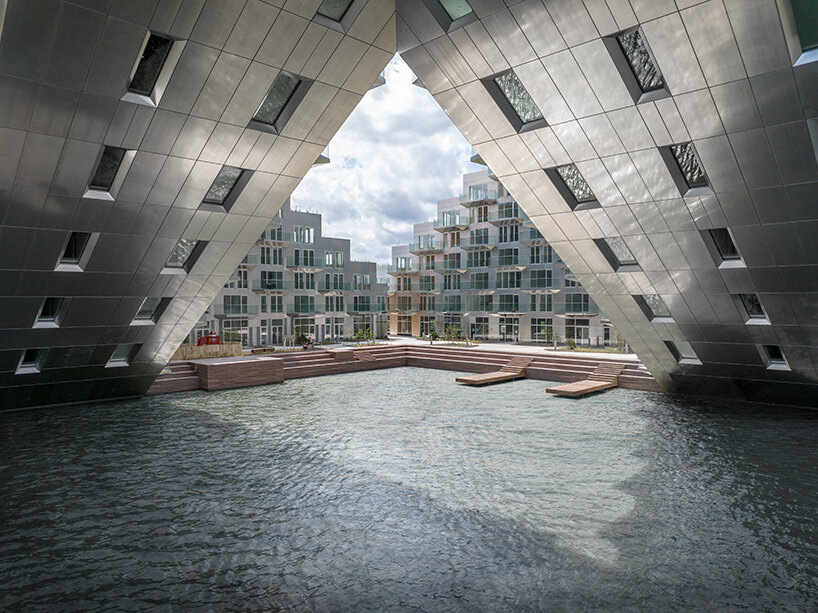
green and sustainable
Sluishuis is one of the most sustainable buildings recently completed. It has an energy performance coefficient (EPC) of 0.00. The building’s heating requirements have been minimized by combining excellent insulation techniques, triple glazing and heat recovery from the ventilation systems and showers. The building is heated by a combination of energy-efficient district heating and heat pumps for hot water and cooling.
The building’s energy consumption for heating, heat pumps, ventilation and LED lighting is fully provided by approximately 2,200 square meters of solar panels. In addition to these technical aspects, a great deal of attention was paid to the greenery and water collection in the development of Sluishuis. At the front, sides and in the courtyard are gardens with local plant species. The greenery runs across the roof terraces upwards in built-in planters. On the roof, this creates a pleasant green atmosphere.
With strong architecture, new housing typologies, high-quality outdoor spaces and a breath-taking view over the IJmeer, Sluishuis forms a welcoming entrance to Amsterdam IJburg.


